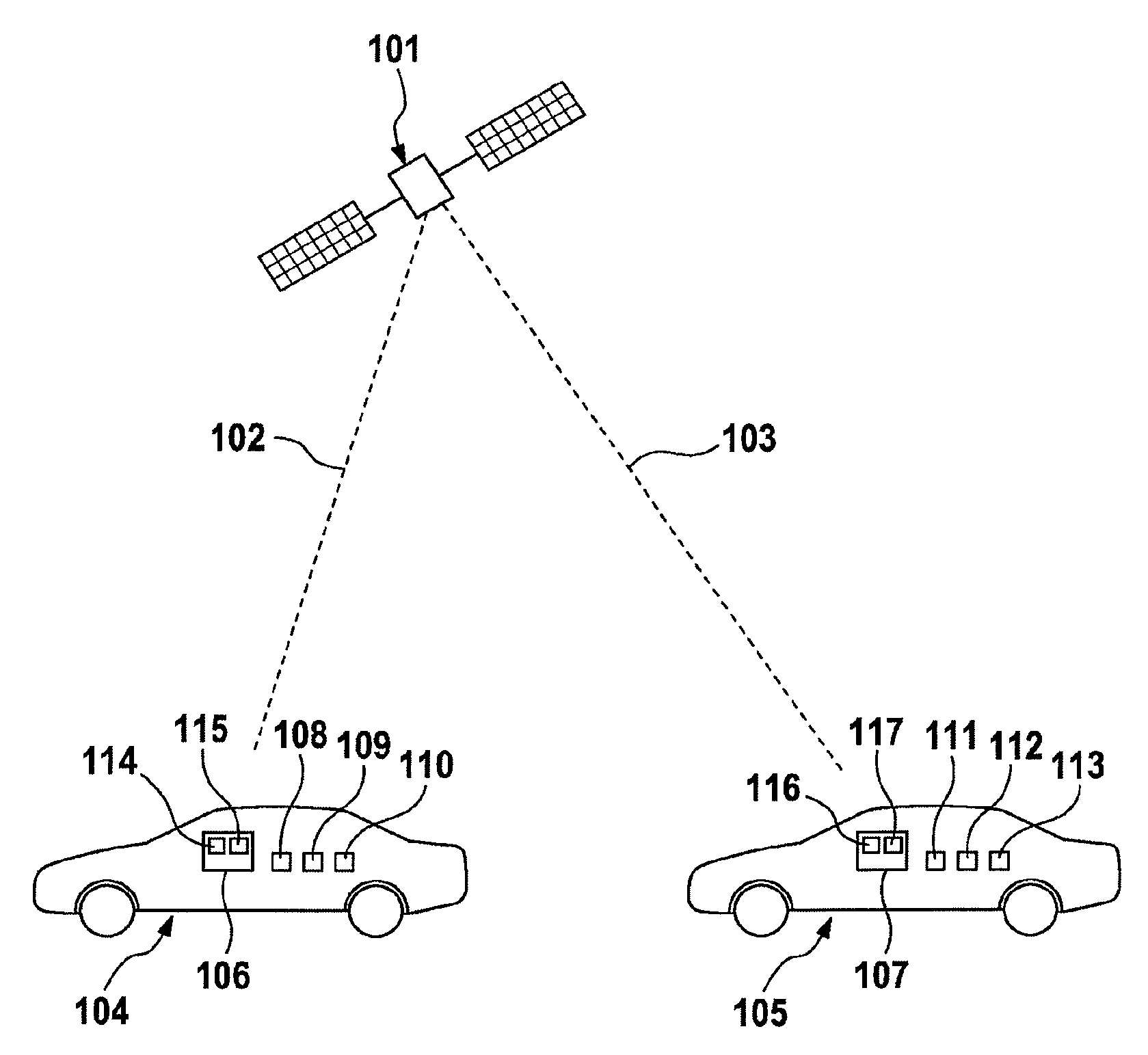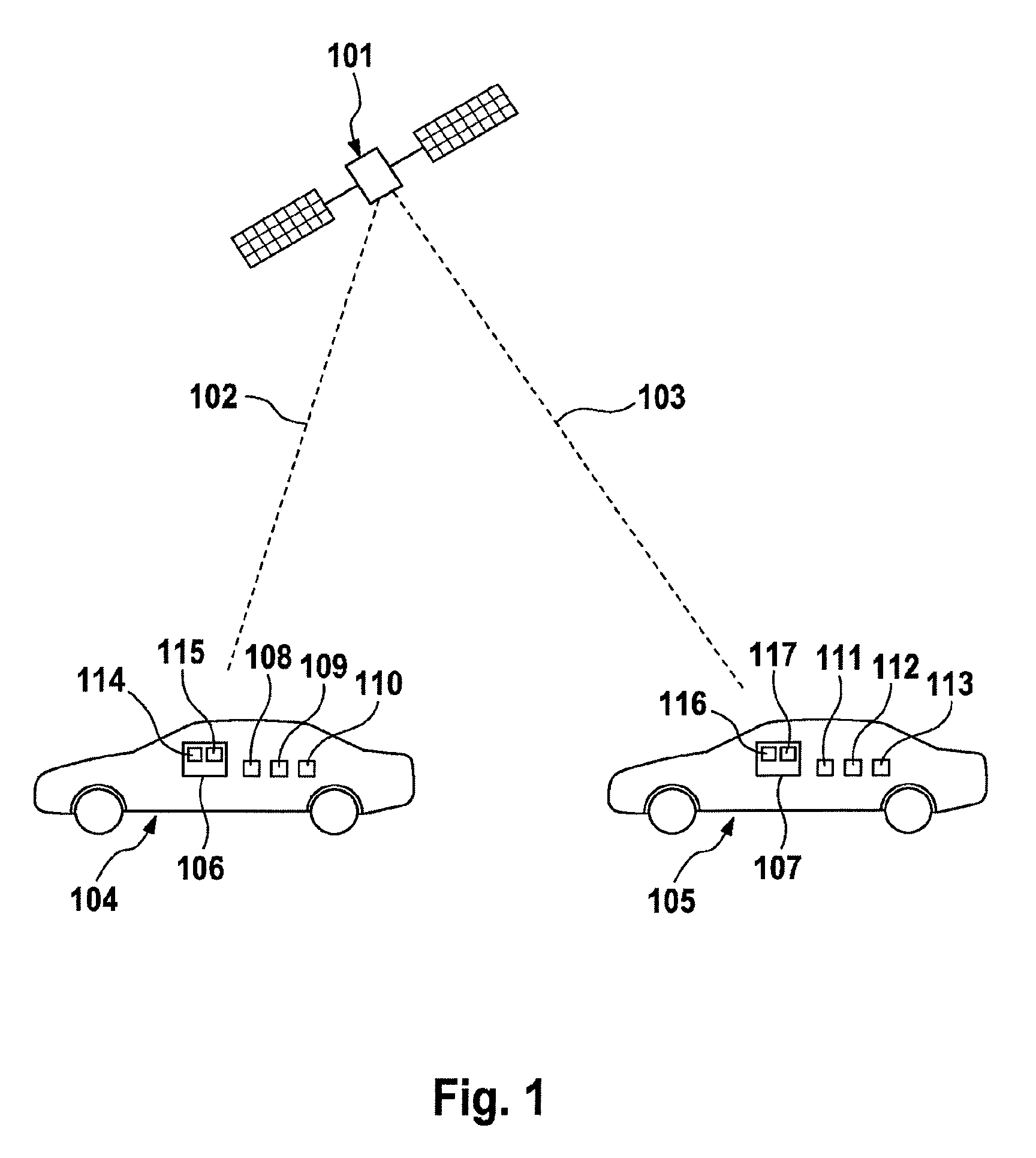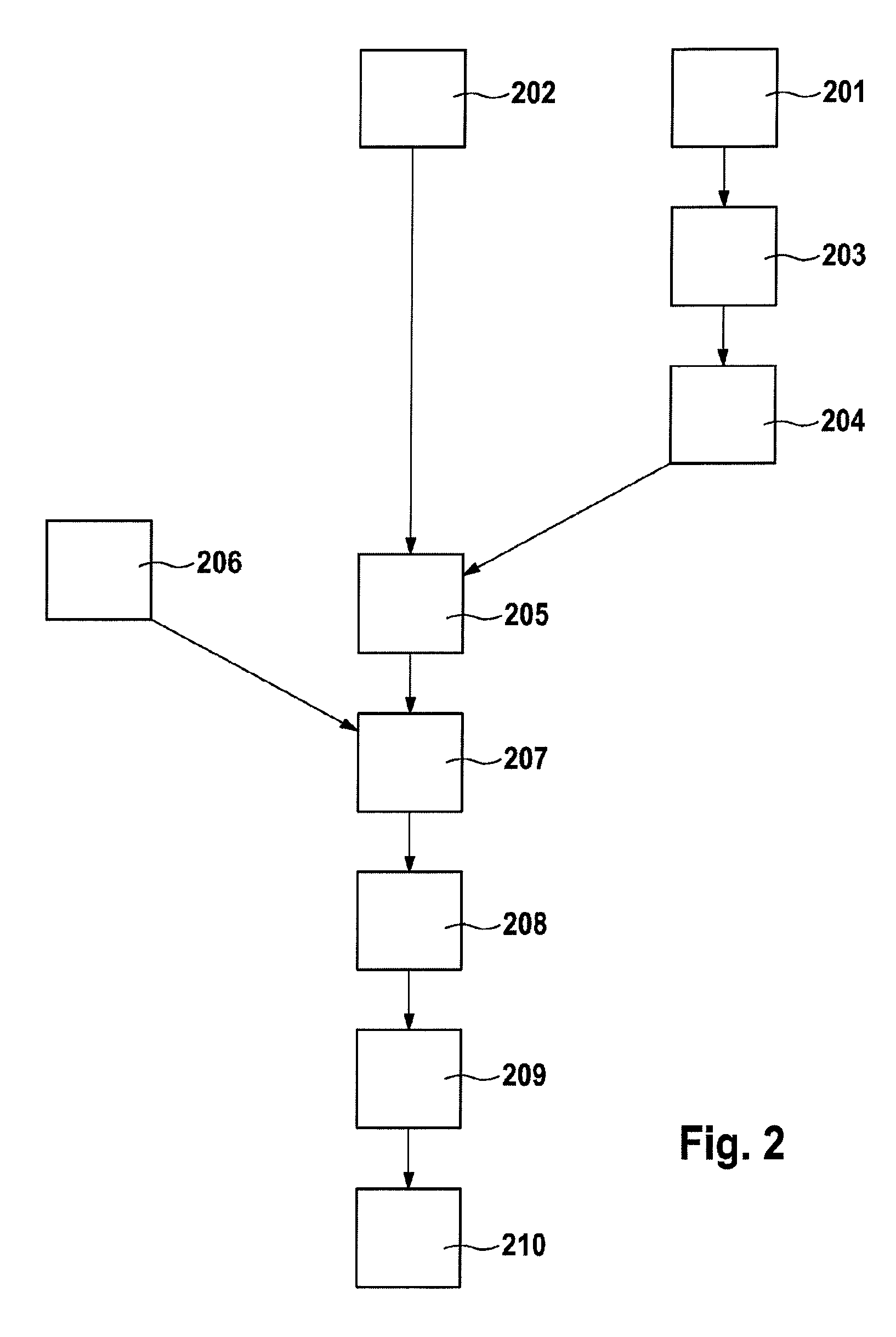Method and system for compensating for a time discrepancy
a time discrepancy and compensation method technology, applied in traffic control systems, multiplex communication, instruments, etc., can solve problems such as 3 m error, disadvantageous vehicle-to-x communication systems known from the prior art, and ready for large-scale production, so as to increase the reliability and precision of inventive compensation for time discrepancies. the effect of additional expenditure and simple determination
- Summary
- Abstract
- Description
- Claims
- Application Information
AI Technical Summary
Benefits of technology
Problems solved by technology
Method used
Image
Examples
Embodiment Construction
[0048]FIG. 1 shows GPS satellite 101, which is used, according to the example, as an external timer and sends identical GPS signals 102 and 103 to communication subscribers 104 and 105. According to the example, communication subscribers 104 and 105 are motor vehicles, wherein communication subscriber 104 comprises first vehicle-to-X communication system 106 and communication subscriber 105 comprises second vehicle-to-X communication system 107. Communication subscriber 104 additionally comprises ambient sensors 108, 109 and 110 in the form of mono camera sensor 108, ultrasonic sensor 109 and radar sensor 110 and communication subscriber 105 comprises ambient sensors 111, 112 and 113 in the form of radar sensor 111, lidar sensor 112 and stereo camera sensor 113. First vehicle-to-X communication system 106 for its part comprises first internal timer 114 and electronic consistency checking means 115, while second vehicle-to-X communication system 107 for its part comprises second inte...
PUM
 Login to View More
Login to View More Abstract
Description
Claims
Application Information
 Login to View More
Login to View More - R&D
- Intellectual Property
- Life Sciences
- Materials
- Tech Scout
- Unparalleled Data Quality
- Higher Quality Content
- 60% Fewer Hallucinations
Browse by: Latest US Patents, China's latest patents, Technical Efficacy Thesaurus, Application Domain, Technology Topic, Popular Technical Reports.
© 2025 PatSnap. All rights reserved.Legal|Privacy policy|Modern Slavery Act Transparency Statement|Sitemap|About US| Contact US: help@patsnap.com



